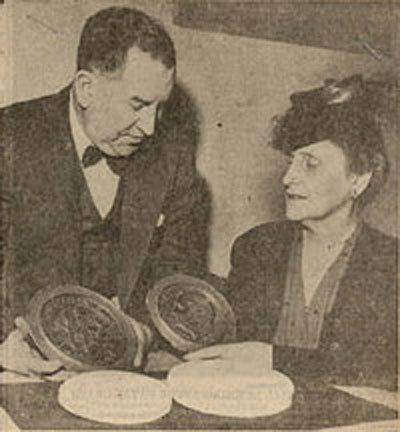Name John Sinnock | Education University of the Arts | |
 | ||
Died May 14, 1947, Stapleton, New York City, New York, United States | ||
2017 D ROOSEVELT DIME: DESIGNED AND ENGRAVED BY JOHN R. SINNOCK (CAN YOU SEE HIS INITIALS "JS" ?)
John Ray Sinnock (July 8, 1888 – May 14, 1947) was the eighth Chief Engraver of the United States Mint from 1925 to 1947.
Contents
- 2017 D ROOSEVELT DIME DESIGNED AND ENGRAVED BY JOHN R SINNOCK CAN YOU SEE HIS INITIALS JS
- 2018 P ROOSEVELT DIME FROM THE PHILADELPHIA MINT DESIGNED AND ENGRAVED BY JOHN R SINNOCK
- History
- Urban folklore
- References
2018 P ROOSEVELT DIME (FROM THE PHILADELPHIA MINT) DESIGNED AND ENGRAVED BY JOHN R. SINNOCK
History
Sinnock was the designer of the Roosevelt dime and Franklin half dollar, among other U.S. coins. His initials can be found at the base of the Roosevelt and Franklin busts. He also sculpted, although did not design, the Purple Heart medal, and various other medals and commemorative coins.
Sinnock was born July 8, 1888, in Raton, New Mexico, and was educated at the Philadelphia Museum School of Industrial Art. He won the A.W. Mifflin Award for study abroad. Sinnock was well-traveled. His longtime confidant was Margaret Campbell who inherited much of his artwork as well as his personal collection of materials related to the development of the Roosevelt Dime.
For ten years Sinnock was an art instructor at both his alma mater and at Western Reserve University. He was appointed Assistant Engraver and Medallist at the Philadelphia Mint in 1917 before becoming the Chief Engraver in 1925.
Urban folklore
Upon the initial minting of the Roosevelt dime in 1946, a false narrative arose in the United States that the letters "JS" actually stood not for John Sinnock, but for Joseph Stalin. The urban folk story coincided with the Second Red Scare. The rumor surfaced again after the release of the Sinnock designed Franklin half dollar in 1948.
Another controversy that surrounded the Roosevelt dime following its public release was an allegation that Sinnock copied or borrowed the design of the President's profile from a bronze bas relief created by sculptress Selma H. Burke for the dime's obverse. Sinnock denied this claim and said that the obverse portrait of the President was a composite of two studies which he made from life in 1933 and 1934. Sinnock said that he also consulted photographs of FDR and had the advice and criticism of two prominent sculptors who specialize in work in relief.
